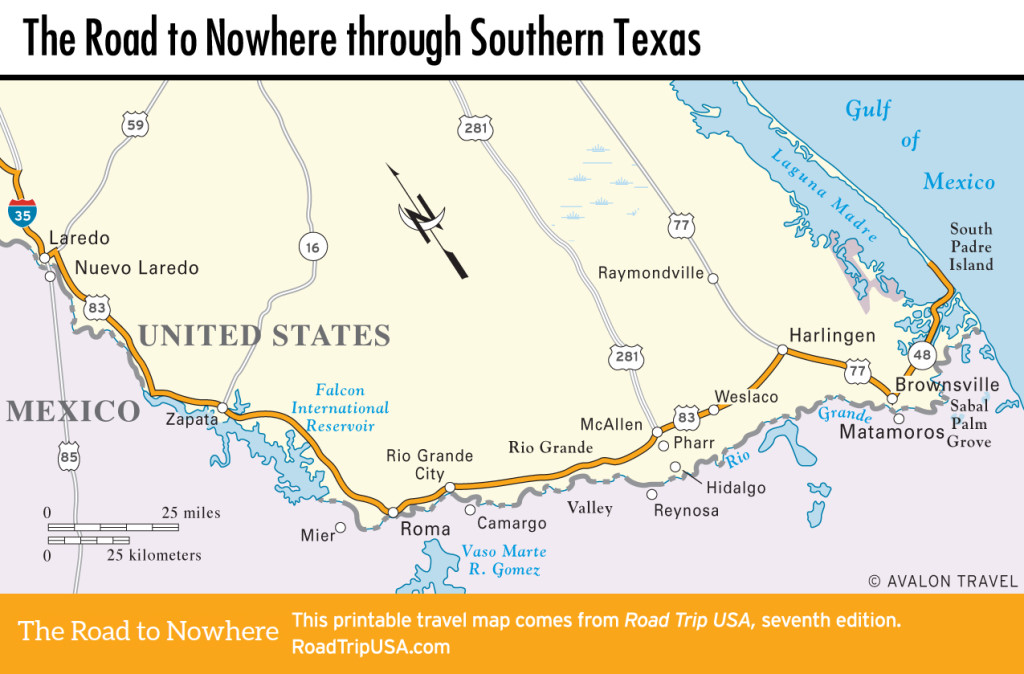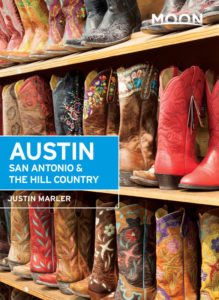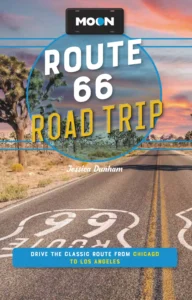Rio Grande Valley
Southeast of Rio Grande City, the river and US-83 curve eastward toward the Gulf of Mexico through a broad delta region known as the Rio Grande Valley, despite the fact there are no nearby mountains to make it a true valley. Compared to the rural stretches US-83 passes through for most of its journey, the Rio Grande Valley is a densely developed, chaotic, and generally poverty-stricken region, with little to recommend it apart from warm winter weather. Citrus orchards line the highway, while lush plantings of bougainvillea and poinsettias drape many of the houses in the string of towns and shantytown colonias that appear every few miles all the way to the gulf. The population of the valley, which sits at approximately the same latitude as the Florida Keys, swells with the arrival each winter of thousands of “winter Texans” fleeing colder climes like Canada and Michigan. This snowbird presence is celebrated by weekly dances, frequent live music jam sessions, and perhaps the nation’s highest concentration of RV and mobile home parks.
While US-83 runs as a multilane freeway past one big-box mega-mall after another, the main attractions are to the south and west, along the Rio Grande. The area’s unique attraction is Los Ebanos Ferry (daily 8am-4pm, $1.25 pedestrians, $4 cars), the last hand-pulled ferry across the Rio Grande. The ferry is about midway between Rio Grande City and McAllen, south and west of Sullivan City. To get there from US-83, drive west on the mazelike El Faro road until you hit the river. The ferry can carry three cars and a small number of pedestrians on each crossing, and you can help pull (if you want to). To be honest, there’s not a lot to see or do at either end, but it’s a fun ride (passports required!).
Another main draw is the potential for bird-watching: About 12 mi (19.3 km) southwest of McAllen via Hwy-374 (west) and Hwy-2062 (south), Bentsen-Rio Grande Valley State Park (956/584-9156) protects precious acres of Rio Grande riparian ash and elm woodlands. It is home to the World Birding Center, which helps bird-watchers find their way around the dozen different wildlife refuges along the lower Rio Grande, where almost 500 different species have been seen and heard.
Harlingen’s Arts and Heritage Museum (956/216-4901, Tues.-Sun., tours $2), 3 mi (4.8 km) north of town at Boxwood and Raintree near the Harlingen airport, contains exhibits interpreting the history of the valley. At the private Marine Military Academy prep school, next to the airport, the Iwo Jima Memorial is the original sculpture (first made of plaster, now protected in fiberglass) from which the famous bronze statue of the flag-raising World War II Marines was made. There’s also a small museum (956/423-9234, Mon.-Sat., donation) displaying memorabilia from the Battle of Iwo Jima and World War II.
Travel Map the Road to Nowhere through Southern Texas
















